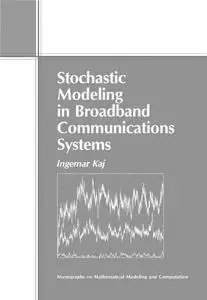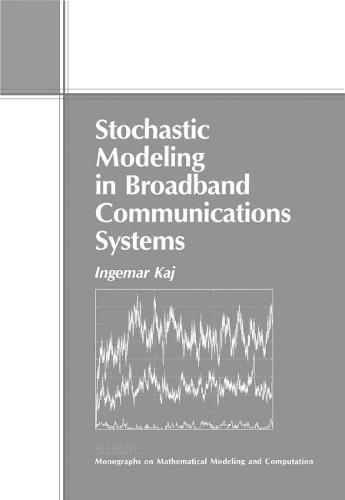Stochastic modeling in broadband communications systems By Ingemar Kaj
2002 | 194 Pages | ISBN: 0898715199 | PDF | 21 MB
2002 | 194 Pages | ISBN: 0898715199 | PDF | 21 MB
Mathematical methods based on the theory of stochastic processes have long been used effectively in telephone traffic modeling. Today's modern network traffic, which is distinctly different from traditional voice traffic, generates challenging mathematical and statistical problems. Stochastic Modeling in Broadband Communications Systems provides a concise overview of stochastic models and mathematical techniques for solving these problems and enhances readers' overall understanding of communications systems. The book also presents an excellent introduction, particularly for students and professionals in probability and applied mathematics, to a huge area of interesting problems and models arising from modern developments in broadband channel transmission systems. The author's clear presentation is based on sound mathematical reasoning, and he has taken special care to make the material easily accessible to readers unable to devote excessive amounts of time to rigorous mathematical detail and generality. Topics include models ranging over different time scales of calls, bursts, and cells; different protocol layers for transport, control, and applications; mechanisms for queuing, collisions, delay, and loss; and the effects of buffering, retransmission, multiplexing, and traffic control. Comprehensive exercises are provided at the end of each chapter. Audience This book is written for students in applied mathematics, probability, statistics, computer science, and computer engineering, from advanced undergraduate to Ph.D. level, as well as for practitioners in telecommunications and computer engineering. Readers should have a basic knowledge of calculus and probability, including random variables, probability distributions, and expected values. The author has included a brief introduction to networking concepts. Contents Preface; Notation and Notions from Probability Theory; Chapter 1: Introduction; Chapter 2: Markov Service Systems; Chapter 3: Non-Markov Systems; Chapter 4: Cell-Switching Models; Chapter 5: Cell and Burst Scale Traffic Models; Chapter 6: Traffic Control; Bibliography; Index.



